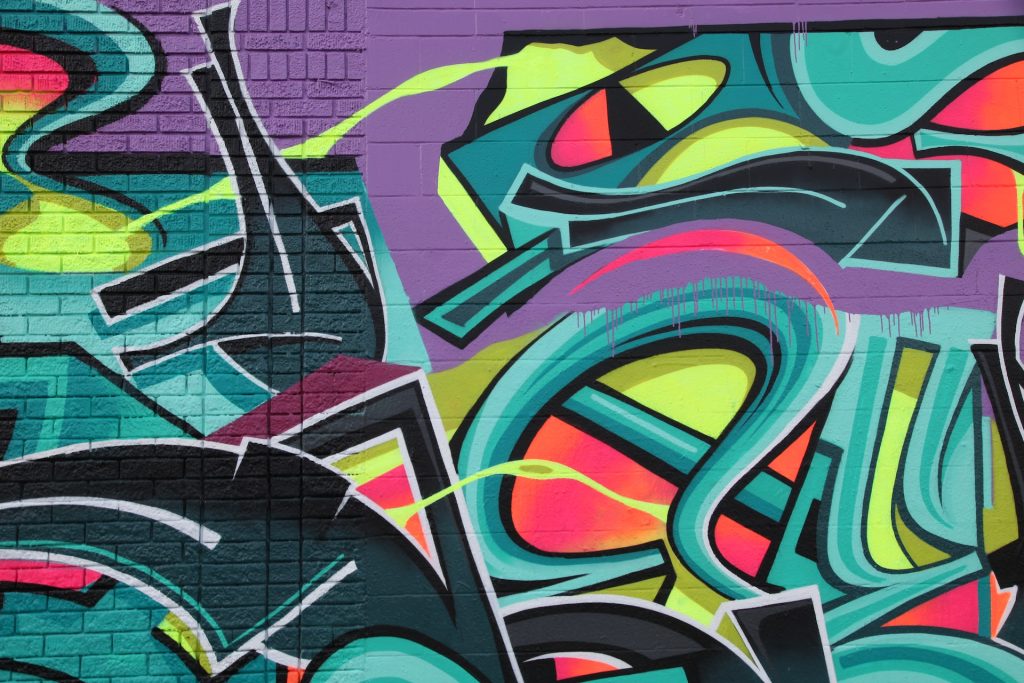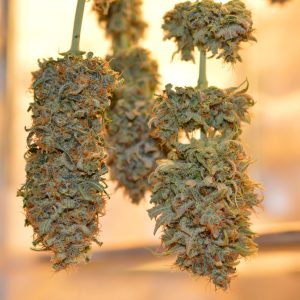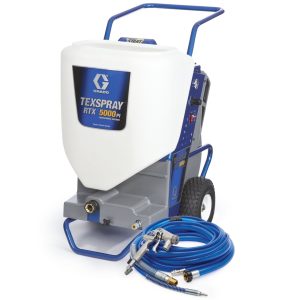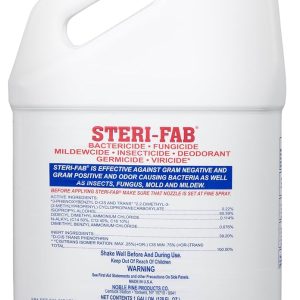
Creating stunning street art and murals requires the right tools, and when it comes to professional-grade aerosol mediums, graffiti with Liquitex spray paint stands out as a game-changer for serious artists. Unlike traditional spray paints that flood the market with harsh chemicals and inconsistent coverage, Liquitex Professional Spray Paint represents a revolutionary approach to urban artistry, combining cutting-edge water-based technology with artist-grade pigments to deliver exceptional results that both beginners and seasoned professionals can appreciate.
The transformation of graffiti culture has evolved dramatically over the past decades, moving from underground rebellion to recognized artistic expression found in galleries, commissioned murals, and legal wall spaces. This evolution demands higher-quality materials that can meet the standards of professional artists while maintaining the authentic street art aesthetic. Graffiti with Liquitex spray paint bridges this gap perfectly, offering the durability and vibrancy needed for outdoor installations while providing the safety and control required for studio work.
Why Liquitex Spray Paint for Graffiti Outperforms Traditional Options
The superiority of graffiti with Liquitex spray paint lies in its unique formulation that addresses the common frustrations artists face with conventional aerosol paints. Liquitex Spray Paint is a fine art tool made with highly lightfast artist-quality pigments. Unlike regular sprays, it uses low-odor professional paint made with water-based technology and low solvents. This innovative approach eliminates many of the health concerns associated with traditional solvent-based sprays while delivering superior performance characteristics.
The water-based technology used in Liquitex formulations provides several distinct advantages for graffiti artists. First, the reduced solvent content means significantly lower odor emissions, making it safer for both indoor studio work and extended outdoor sessions. Second, the water-based system allows for better color mixing and layering capabilities, enabling artists to achieve more sophisticated blending effects that would be difficult with traditional spray paints.
Color saturation and lightfastness represent another crucial advantage when choosing graffiti with Liquitex spray paint. This innovative formula delivers exceptional colour brilliance, lasting lightfastness, and enduring durability, all while minimising odour. The pigment quality ensures that vibrant colors remain true over time, resisting the fading and color shift that plague many street art pieces created with inferior materials.
Key Performance Benefits:
- Low-odor formulation for safer studio and indoor use
- Artist-grade pigments ensuring superior color consistency
- Water-resistant finish once fully cured
- Matte finish that reduces glare and provides authentic street art appearance
- Excellent adhesion on multiple surfaces including canvas, wood, metal, and concrete
- Fast-drying properties allowing for efficient layering techniques
Essential Techniques for Graffiti with Liquitex Spray Paint
Mastering the application techniques specific to graffiti with Liquitex spray paint requires understanding how its unique properties affect spray patterns, coverage, and blending capabilities. The water-based formula behaves differently from traditional solvent-based sprays, offering both opportunities and challenges that artists must learn to navigate effectively.
Distance control becomes particularly important when working with Liquitex spray paint. The optimal spraying distance typically ranges from 6 to 12 inches from the surface, depending on the desired effect. Closer distances produce more concentrated coverage with sharper edges, while greater distances create softer, more diffused applications perfect for background gradients and atmospheric effects.
Pressure management with graffiti with Liquitex spray paint requires a different approach than traditional cans. The water-based system operates at lower pressure levels, providing better control but requiring more deliberate movements. Artists often find they can achieve more precise detail work and smoother color transitions once they adapt to the reduced pressure characteristics.
Advanced Application Methods:
Layering techniques with Liquitex spray paint allow for sophisticated color builds that rival traditional painting methods. The water-based formula permits multiple thin coats without the heavy buildup or runs common with solvent-based alternatives. This characteristic makes graffiti with Liquitex spray paint particularly suitable for photorealistic portraits and detailed character work.
Stencil applications benefit tremendously from the controlled spray pattern of Liquitex products. The consistent pressure and fine atomization prevent paint from bleeding under stencil edges, resulting in crisp, clean lines that maintain their integrity even on textured surfaces. Professional artists often report that they can achieve print-quality results when combining precision stencils with Liquitex spray paint.
Blending and gradient work represents one of the strongest advantages of graffiti with Liquitex spray paint. The extended working time provided by the water-based formula allows artists to manipulate wet paint longer, creating seamless color transitions that would be impossible with fast-drying solvent-based alternatives. This capability opens up possibilities for realistic sky effects, dimensional shading, and complex color harmonies.
Surface Preparation and Compatibility for Liquitex Spray Paint Graffiti
Success with graffiti with Liquitex spray paint depends heavily on proper surface preparation and understanding material compatibility. The water-based nature of these paints interacts differently with various substrates compared to traditional spray paints, requiring specific preparation techniques to ensure optimal adhesion and longevity.
Concrete and masonry surfaces typically provide excellent adhesion for Liquitex spray paints without extensive preparation. However, cleaning the surface of loose debris, dust, and previous paint residues significantly improves the final result. A simple wash with soap and water, followed by complete drying, often suffices for most exterior wall applications.
Metal surfaces require more careful consideration when planning graffiti with Liquitex spray paint projects. While the paint adheres well to clean metal, rust prevention becomes crucial for long-term durability. Light sanding to remove oxidation and application of appropriate primer ensures the best possible bond and prevents future paint failure.
Surface-Specific Considerations:
Canvas and fabric applications showcase the versatility of graffiti with Liquitex spray paint beyond traditional wall surfaces. The paint’s flexibility when dry prevents cracking on stretched canvases, making it ideal for gallery pieces and portable artwork. Many professional artists appreciate being able to create graffiti-style pieces on canvas that can be transported and displayed in various settings.
Wood surfaces accept Liquitex spray paint readily, particularly when working on found objects, installation pieces, or constructed elements within larger graffiti compositions. The water-based formula soaks into the wood fibers slightly, creating a mechanical bond that enhances adhesion beyond just surface tension.
Glass and smooth surfaces present unique opportunities for graffiti with Liquitex spray paint applications. While adhesion on non-porous surfaces requires careful technique, the results can be stunning. Light surface preparation with fine sandpaper or chemical etching agents significantly improves paint adhesion on glass, creating possibilities for window art, vehicle graphics, and architectural accent work.
Color Theory and Palette Selection for Graffiti with Liquitex Spray Paint
Understanding color relationships becomes even more critical when working with graffiti with Liquitex spray paint due to the precision and vibrancy these materials offer. The artist-grade pigments respond to color theory principles more predictably than cheaper alternatives, allowing for sophisticated color schemes that truly showcase artistic skill and planning.
Primary color selection forms the foundation of any successful graffiti piece using Liquitex paints. The brand offers several formulations of each primary color, including transparent, semi-transparent, and opaque versions. This variety allows artists to choose colors based on their intended layering effects and final opacity requirements.
Mixing capabilities represent a significant advantage of graffiti with Liquitex spray paint over traditional aerosols. Transparent Mixing White with reducing tinting strength, making it ideal for strong tints, glazing, and toning down colors. This specialized mixing white allows artists to create custom tints without losing color intensity, a common problem when using standard white paint for lightening colors.
Strategic Color Combinations:
Complementary color schemes work exceptionally well with graffiti with Liquitex spray paint because the high-quality pigments maintain their color integrity even when used in proximity to contrasting hues. The reduced color bleeding and sharp edge definition possible with these paints allow for dramatic complementary combinations that create visual impact without muddying.
Analogous progressions benefit from the extended working time of water-based formulas. Artists can create smooth color transitions across analogous families, building complex gradients that add depth and dimension to letter forms and background elements. The ability to work wet-into-wet for extended periods makes sophisticated color modeling possible.
Monochromatic studies using graffiti with Liquitex spray paint can achieve remarkable tonal range through layering transparent and opaque formulations of the same hue. This technique particularly excels in portrait work and realistic representations where subtle value changes create form and dimension.
Maintenance and Longevity of Liquitex Spray Paint Graffiti
The investment in graffiti with Liquitex spray paint pays dividends in terms of artwork longevity and maintenance requirements. Liquitex Professional Acrylic Spray Paint is a unique medium developed specifically for professional artists, combining artist-grade pigments with innovative water-based technology to produce a spray that is low odor, lightfast, highly durable, and perfect for use both indoors and out. Understanding proper maintenance techniques ensures that graffiti pieces maintain their visual impact for years rather than months.
Weather resistance of graffiti with Liquitex spray paint exceeds that of most conventional aerosol paints due to the acrylic binder system used in the formulation. Once fully cured, the paint forms a flexible, water-resistant membrane that expands and contracts with temperature changes without cracking or peeling. This flexibility proves particularly important for outdoor installations subject to seasonal weather variations.
UV stability represents another crucial advantage of choosing Liquitex products for exterior graffiti work. The lightfast pigments resist fading and color shift even under intense sunlight exposure, maintaining color integrity that keeps artwork vibrant for extended periods. This characteristic makes graffiti with Liquitex spray paint particularly valuable for commissioned murals and legal wall projects where longevity matters.
Protection and Enhancement Strategies:
Clear coat applications can further enhance the durability of graffiti with Liquitex spray paint installations. Compatible acrylic clear coats provide additional UV protection and make the surface easier to clean without affecting the underlying artwork. This technique proves particularly valuable for indoor installations or high-traffic areas where the artwork might encounter handling or environmental contaminants.
Cleaning protocols for maintaining graffiti with Liquitex spray paint artwork differ from those used with traditional spray paints. The water-based nature of the paint allows for gentle cleaning with mild soap solutions without damaging the paint film. This characteristic makes it possible to remove dirt, dust, and minor graffiti tags from commissioned pieces without affecting the original artwork.
Touch-up procedures benefit from the color consistency of Liquitex products. Because the pigments remain stable batch to batch, artists can perform touch-up work months or years after the original installation with confidence that color matches will be accurate. This consistency proves invaluable for maintaining large-scale murals and commercial installations.
Professional Applications and Graffiti with Liquitex Spray Paint in Commercial Settings
The transition from underground graffiti culture to legitimate commercial applications has created new opportunities for artists skilled in graffiti with Liquitex spray paint techniques. Liquitex Spray Paints are safe for studio use, indoor art, and educational environments. Bring the high quality and dependability of Liquitex to all your graffiti, mural and spray paint art with new Professional Spray Paint! This safety profile opens doors to projects that would be impossible with traditional solvent-based sprays.
Educational environments increasingly welcome graffiti with Liquitex spray paint for student projects and instructional demonstrations. The low-odor, low-solvent formulation meets safety requirements for classroom use while providing students with professional-grade materials that produce impressive results. Art instructors appreciate being able to teach spray paint techniques without the ventilation concerns associated with traditional aerosols.
Corporate murals and branding projects benefit from the professional appearance and longevity of graffiti with Liquitex spray paint applications. Companies commissioning graffiti-style artwork for offices, retail spaces, and public areas require materials that meet building codes and provide predictable performance. The consistent quality and safety profile of Liquitex products make them ideal for these applications.
Market Opportunities:
Gallery exhibitions featuring graffiti-style artwork created with graffiti with Liquitex spray paint face fewer restrictions regarding installation and maintenance. The professional-grade materials meet museum standards for permanence and safety, allowing street art aesthetics to enter prestigious exhibition spaces without compromising institutional requirements.
Restoration projects for historic graffiti pieces increasingly turn to graffiti with Liquitex spray paint for conservation work. The archival quality of the pigments and binders ensures that restoration efforts will maintain color integrity over time, preserving important cultural artifacts for future generations.
Film and television applications benefit from the consistent color temperature and coverage characteristics of Liquitex spray paints. The predictable behavior under various lighting conditions and the ability to match colors precisely across multiple shooting days makes graffiti with Liquitex spray paint valuable for set decoration and prop creation.
Advanced Techniques: Mixed Media Integration with Liquitex Spray Paint Graffiti
The compatibility of graffiti with Liquitex spray paint with other artistic mediums opens up possibilities for complex mixed-media compositions that push the boundaries of traditional street art. The water-based acrylic system bonds well with various other materials, allowing artists to incorporate elements that would be impossible with solvent-based alternatives.
Traditional brush work integration allows artists to combine detailed hand-painted elements with spray paint backgrounds and effects. The similar dry time and chemical compatibility between Liquitex spray paints and their traditional acrylic counterparts means artists can work seamlessly between techniques without concern for adhesion problems or chemical incompatibility.
Stencil and screen printing combinations create unique textural effects when combined with graffiti with Liquitex spray paint backgrounds. The controlled spray pattern works well with both positive and negative stencils, while the extended working time allows for complex multi-layer stencil applications that build sophisticated imagery.
Innovative Mixed Media Approaches:
Collage elements adhere well to graffiti with Liquitex spray paint surfaces using appropriate acrylic mediums. This capability allows artists to incorporate found materials, photographs, and other elements into their graffiti compositions, creating rich visual narratives that combine street art aesthetics with fine art techniques.
Digital integration becomes possible through the use of printable media that accepts graffiti with Liquitex spray paint applications. Artists can print digital elements on appropriate substrates, then enhance them with spray paint techniques, creating hybrid pieces that combine digital precision with hand-crafted authenticity.
Three-dimensional elements can be incorporated into graffiti with Liquitex spray paint compositions through the use of compatible construction materials. The paint adheres well to various sculptural media, allowing for installations that extend beyond traditional flat wall surfaces into architectural space.
Call to Action: Elevate Your Street Art with Graffiti with Liquitex Spray Paint
Transform your artistic practice by making the switch to graffiti with Liquitex spray paint and experience the difference that professional-grade materials make in your creative output. Whether you’re planning your next legal wall piece, preparing for a gallery exhibition, or developing commercial mural proposals, investing in quality spray paint technology will elevate your work and expand your artistic possibilities.
The time to upgrade your toolkit is now – discover how graffiti with Liquitex spray paint can revolutionize your approach to aerosol artistry and unlock new levels of creative expression in your urban art practice.
Sources:
Related Topics:
- Learn about alternative aerosol options with our kraylon spray paint techniques guide





